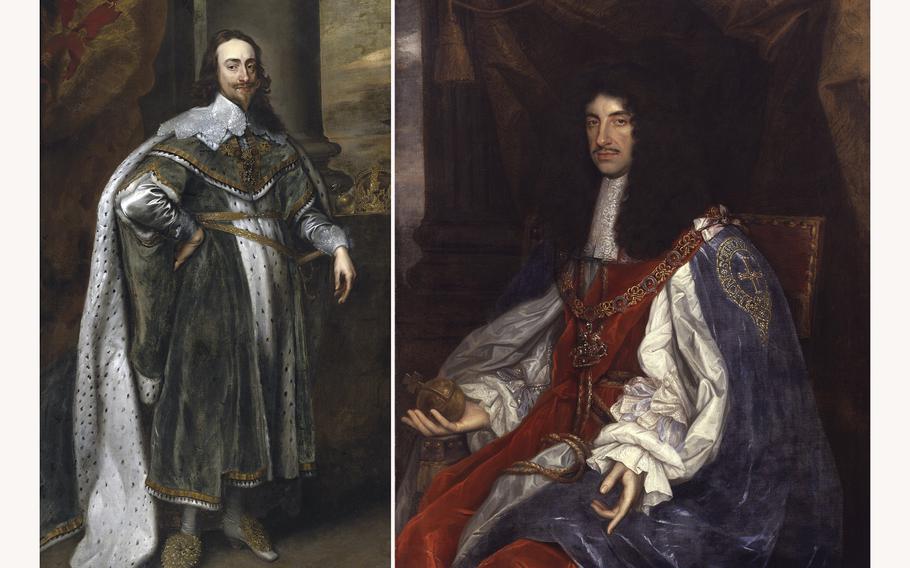
Portraits of Charles I, King of England, King of Scotland, and King of Ireland 1625 – 1649 by Anthony van Dyck, left, and Charles II, King of England 1660 – 1665 by John Michael Wright (WikiMedia Commons)
Shortly after the death Thursday of Queen Elizabeth II, a royal announcement said her heir, her eldest son Charles, would be known as King Charles III. He will speak as king for the first time Friday.
There had been speculation for years that Charles might choose a different name (he could have chosen any of his four names - Charles, Philip, Arthur or George - according to the BBC) if and when he took the throne.
So who were the first two British monarchs named King Charles? Well, they had a bit of a hard time.
One was caught up in a civil war and beheaded; the other spent the first decade of his reign in exile.
The first Charles was born in Scotland in 1600, the second son of the king and queen of Scotland. When the first Queen Elizabeth died in 1603, Charles's dad succeeded her, becoming King James I. Charles was raised in privilege and wealth, but he did not have it easy: He was frequently ill, had difficulty walking, struggled with a stammer and was generally overshadowed by his strapping big brother, the heir apparent.
But then his older brother died suddenly of an illness, propelling Charles, still a boy, to the front of the line of succession. He was in his mid-20s when his father died, and he became king.
His dad had already been having trouble with Parliament for years, and that continued in Charles's reign, especially after he married a Catholic. Here we will skip a lot of complicated and still-disputed history - Puritans! Spain! Ship money! Ireland! - and cut to the chase: By 1642, Parliament had booted the king from London, and England descended into civil war.
In the end, the king was captured, tried for treason and beheaded. On the way to his execution on a chilly January day in 1649, he asked for an extra shirt. According to historian Charles Carlton, he did not want to shiver from cold and have the witnesses think he was shivering from fear.
The second Charles was just 18 and in exile when his father was killed. Scotland declared him King Charles II, but the English Parliament abolished the monarchy and declared England a republic. For the next decade, he could only watch from a distance as the Puritan Oliver Cromwell took over the republic, essentially becoming a dictator and banning anything fun: theater, sports, feast days, makeup, cussing. He even banned Christmas.
After Cromwell died in 1658, his son tried to take up the reins, but everybody was sick of it. Parliament invited King Charles II back onto the throne on his 30th birthday. Certainly one to hold a grudge, Charles made sure anyone who signed his dad's death warrant was executed; even Cromwell's body was dug up and beheaded.
King Charles II oversaw the Restoration, a period defined by bawdy comedy, sexy clothes and general post-Puritan debauchery. Even so, the king still had some hard times - there was the Great Plague of 1665, the Great Fire of London in 1666, and Parliament continued to annoy and constrain him as they had his father and grandfather.
So how will it be for King Charles III? Only time will tell, but odds are it will not end with a beheading.